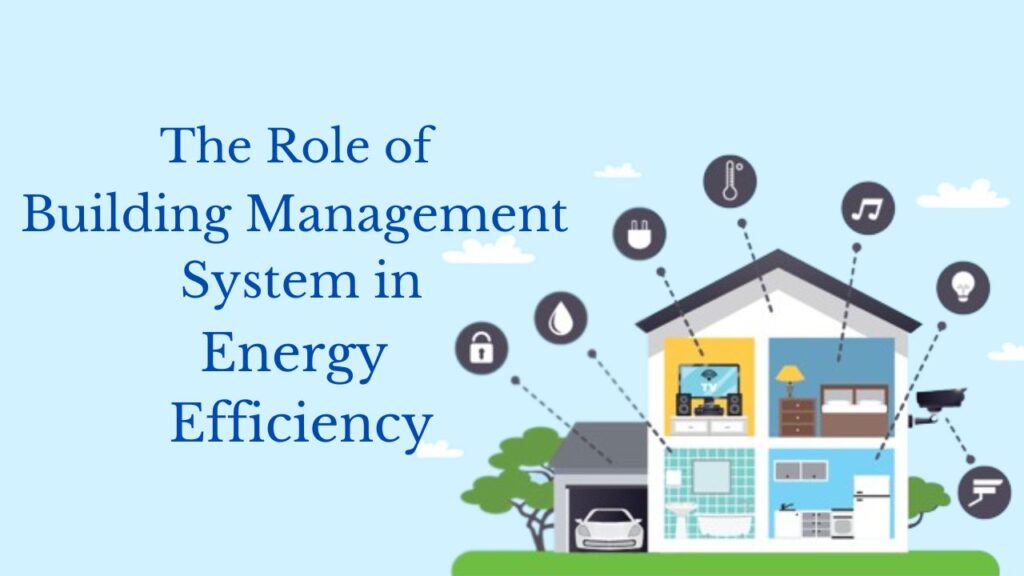Energy efficiency is a crucial concern in today’s world. With the ever-increasing demand for energy and the environmental impact of energy consumption, it has become imperative to find ways to reduce our energy usage.
One of the most effective ways to achieve this is through the use of a Building Management System (BMS). In this article, we will explore the role of BMS in improving energy efficiency in buildings and how they work in simple and easy language.
What is a Building Management System (BMS)?
A Building Management System, often referred to as a BMS or Building Automation System (BAS), is a sophisticated control system that is designed to monitor and manage various building services.
These services include heating, ventilation, air conditioning (HVAC), lighting, security, and even elevators. The primary goal of a BMS is to optimize the building’s performance, making it more comfortable, secure, and, importantly, energy-efficient.
How Does a BMS Work?
A BMS works by integrating various components and devices within a building to create a centralized control system. Here’s a simple breakdown of how it operates:
- Data Collection: BMS collects data from sensors and devices placed throughout the building. These sensors can measure temperature, humidity, light levels, occupancy, and more.
- Data Analysis: The collected data is analyzed in real-time to understand the building’s current conditions. For example, if the BMS detects that a room is too warm, it will take note of this.
- Decision-Making: Based on the data analysis, the BMS makes decisions to optimize building performance. For instance, if it’s too warm in a room, the BMS might decide to lower the thermostat to save energy.
- Control: The BMS sends control signals to various systems and devices, instructing them to adjust their operation. This can include adjusting the HVAC system, dimming or turning off lights, or even locking/unlocking doors.
- Monitoring and Feedback: The BMS continuously monitors the building’s conditions and the results of its decisions. If the temperature in the room becomes comfortable, it will record this and adjust its operations accordingly.
- User Interface: Most BMS have a user interface that allows building managers to monitor and control the system manually if needed. This interface often displays real-time data and allows for adjustments.
The Role of BMS in Energy Efficiency
Now that we understand how a BMS works, let’s delve into its role in improving energy efficiency:
- Optimizing HVAC Systems: Heating and cooling are major contributors to energy consumption in buildings. BMS can monitor temperature and occupancy and adjust HVAC settings to ensure that rooms are only heated or cooled when necessary. This prevents energy wastage.
- Efficient Lighting Control: BMS can control lighting systems, turning lights off in unoccupied areas and adjusting brightness based on natural light levels. This reduces electricity consumption and extends the life of light bulbs.
- Energy Monitoring: BMS can track energy usage and provide detailed reports on where and when energy is being consumed. This data is valuable for identifying areas where energy-saving measures can be implemented.
- Predictive Maintenance: BMS can analyze data from equipment and systems to predict when maintenance is needed. Regular maintenance ensures that systems run efficiently and reduces the chances of breakdowns, which can be costly and wasteful.
- Occupancy Sensors: BMS can utilize occupancy sensors to determine when rooms or areas are in use. This information can be used to control lighting, HVAC, and other systems, saving energy when spaces are unoccupied.
- Remote Monitoring and Control: BMS often allow for remote monitoring and control of building systems. Building managers can make real-time adjustments to optimize energy efficiency without being physically present in the building.
Benefits of Using BMS for Energy Efficiency
Using a BMS to improve energy efficiency offers several benefits, both for building owners and the environment:
- Reduced Energy Costs: By optimizing energy use, BMS can significantly reduce energy bills, which can lead to substantial cost savings for building owners.
- Environmental Impact: Lower energy consumption means a reduced carbon footprint. BMS can help buildings contribute to environmental sustainability by conserving energy and reducing greenhouse gas emissions.
- Improved Comfort: BMS ensures that occupants are in a comfortable environment. It can adjust temperature and lighting to meet individual preferences while still being energy-efficient.
- Long-Term Savings: While there may be an initial investment in installing a BMS, the long-term savings in energy costs often outweigh this expense.
- Extended Equipment Life: By operating equipment and systems at optimal levels, BMS can extend the life of these components, reducing the need for replacements and associated costs.
Challenges and Considerations
While BMS offers numerous benefits, there are some challenges and considerations to keep in mind:
- Initial Costs: Implementing a BMS can be costly, and the return on investment may take some time. However, the long-term savings usually justify the upfront expenditure.
- Maintenance and Training: BMS requires regular maintenance and skilled personnel to operate effectively. Building managers need to be trained to use the system properly.
- Compatibility: Integrating a BMS into an existing building can be complex, as it requires compatibility with existing equipment and systems.
- Cybersecurity: BMS relies on digital systems and can be vulnerable to cyberattacks. Security measures must be in place to protect the system from potential threats.
Some More Related Stories
Wrapping Up
In a world where energy efficiency and environmental responsibility are paramount, Building Management Systems play a crucial role in ensuring that buildings are as energy-efficient as possible.
Through data collection, analysis, and decision-making, BMS can optimize the operation of HVAC, lighting, and other building systems, ultimately leading to reduced energy consumption and cost savings.
While there are challenges in implementing and maintaining BMS, the long-term benefits in terms of energy efficiency, comfort, and environmental impact make them a wise choice for building owners and managers.
Building Management Systems are not just a technical solution; they are a path towards a more sustainable and efficient future for our buildings and our planet.
Frequently Asked Questions (FAQs)
Q1: What is a Building Management System (BMS)?
Ans: A Building Management System, often called a BMS or Building Automation System (BAS), is a centralized control system that manages various building services like heating, ventilation, lighting, and security to optimize building performance and energy efficiency.
Q2: How does a BMS improve energy efficiency in buildings?
Ans: A BMS improves energy efficiency by monitoring and controlling building systems based on real-time data. It can adjust HVAC, lighting, and other systems to minimize energy usage when it’s not needed and ensure optimal operation when it is.
Q3: What are the key components of a BMS?
Ans: A BMS comprises sensors, controllers, actuators, and a central control unit. Sensors collect data, controllers make decisions based on that data, actuators carry out the instructions, and the central unit manages and coordinates the entire system.
Q4: What types of buildings can benefit from a BMS?
Ans: BMS can be used in various types of buildings, including residential, commercial, industrial, and institutional structures. Any building with systems that require control and optimization can benefit from a BMS.
Q5: Can a BMS be retrofitted into existing buildings?
Ans: Yes, it’s possible to retrofit a BMS into existing buildings. However, it can be complex and may require adjustments to existing systems for compatibility. Proper planning and expert guidance are essential in such cases.
Q6: How long does it take to see a return on investment (ROI) when implementing a BMS for energy efficiency?
Ans: The ROI for a BMS varies depending on factors such as the size of the building, the scope of the system, and the local energy costs. In general, most building owners see a positive ROI within a few years due to reduced energy bills.



